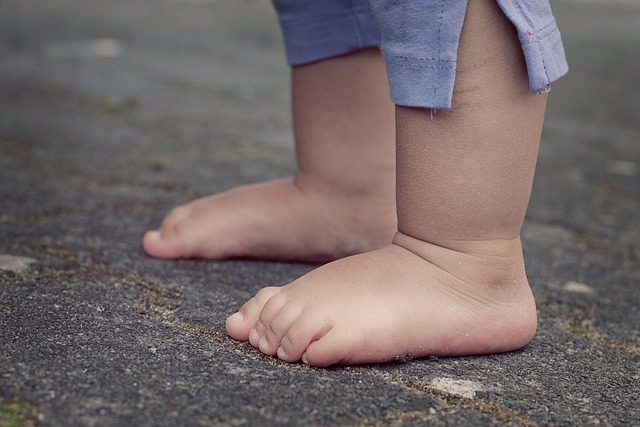Oregon's Child Welfare Court System prioritizes the protection and well-being of vulnerable children through a structured, collaborative approach guided by the comprehensive child welfare court guide. This system navigates complex processes, ensuring fairness and efficiency. Key stakeholders—including judges, social workers, attorneys, foster parents, and caregivers—follow the guide to manage cases from initial petitions to permanent custody decisions. The guide guarantees legal rights and protections for all parties, emphasizing the best interests of the child through clear procedures, evidence evaluation, post-hearing decisions, and appeal processes.
“Uncover Oregon’s Child Welfare Court System with our comprehensive procedural guide. This resource navigates the intricate web of protection for vulnerable youth, shedding light on key players—social workers, judges, and lawyers—and their roles. From initial case assessment to post-hearing decisions and appeals, we demystify each step. Understand legal rights and evidence presentation, ensuring fairness. Armed with this guide, families, advocates, and professionals can confidently navigate Oregon’s child welfare court process.”
- Understanding Oregon's Child Welfare Court System
- Key Players and Their Roles in the Proceedings
- The Step-by-Step Guide to a Typical Case
- Legal Rights and Protections for All Involved Parties
- Evidence and Testimony: What to Expect
- Post-Hearing Decisions and Appeal Process
Understanding Oregon's Child Welfare Court System

Oregon’s Child Welfare Court System is a complex yet crucial network designed to protect and support vulnerable children within the state. This system serves as a guiding light for families in crisis, offering a structured framework for addressing issues related to child safety, well-being, and permanency. The court guide plays a pivotal role in this process, providing a comprehensive roadmap for all stakeholders involved—from social workers to parents and guardians.
This procedural guide is an essential tool that ensures every case is handled with fairness, efficiency, and the best interests of the child at heart. It navigates the often labyrinthine processes, offering clear directions and timelines. By utilizing this resource, court professionals can streamline interventions, enhance communication, and ultimately foster positive outcomes for Oregon’s young ones.
Key Players and Their Roles in the Proceedings

In Oregon, the child welfare court system involves several key players who work collaboratively to ensure the safety and well-being of vulnerable children. The process begins with a petition filed by a social services agency or concerned individual, highlighting concerns about a child’s living conditions or potential harm. This document serves as the foundation for the court proceedings, guiding the involvement of various professionals.
The judge plays a pivotal role in managing the case, ensuring all parties adhere to the Oregon child welfare court guide. They make critical decisions, including temporary arrangements for the child’s care and eventual long-term placements. Social workers are tasked with investigating the allegations, gathering evidence, and presenting findings to the court. Attorneys represent the interests of both the child and the parents or guardians, advocating for their rights while also ensuring the best outcome for the minor. Foster parents or caregivers temporarily take in children, providing a stable home environment until a permanent solution is reached. Each of these roles contributes uniquely to the overall goal of protecting and nurturing Oregon’s young individuals within the legal framework of the child welfare court guide.
The Step-by-Step Guide to a Typical Case

A successful navigation of the Oregon child welfare court procedural guide is pivotal for all involved parties. The process, though intricate, is designed to ensure the best interests of the child are at the forefront. A typical case unfolds as a multi-stage journey, beginning with an initial petition filed by a concerned individual or agency, alleging a child’s well-being is at risk. This document serves as the linchpin, detailing specific allegations and proposing remedies, such as temporary custody or services for the family.
Following this, a court date is set, where all parties gather to present their cases. Here, social workers, attorneys, and foster care providers offer testimony and evidence. The judge carefully evaluates these inputs, making informed decisions on interim measures like placement or visitation rights. This step-by-step process continues with potential case plans, court reviews, and permanent custody determinations, all guided by the comprehensive Oregon child welfare court guide.
Legal Rights and Protections for All Involved Parties

In Oregon’s child welfare court, all involved parties have specific legal rights and protections guaranteed by the state’s comprehensive child welfare court guide. This includes parents or guardians, children, foster families, and other caregivers. These rights ensure fairness and due process throughout the entire proceeding, with a primary focus on the best interests of the child.
The Oregon child welfare court guide emphasizes that every individual has the right to be informed about their legal options, to participate in hearings, and to access representation from an attorney. It also mandates the protection of confidential information, ensuring privacy for all parties involved. This guidance is designed to foster a safe and supportive environment where decisions are made with the child’s well-being at the forefront.
Evidence and Testimony: What to Expect

In Oregon’s child welfare courts, understanding the role of evidence and testimony is crucial for anyone involved in the process, as outlined in the comprehensive child welfare court guide. Both sides—the petitioner (usually a government agency) and the parent or guardian—have the opportunity to present their case through evidence and witness testimonies. This can include documents like medical records, school reports, and financial statements, all aimed at providing the court with relevant information about the child’s well-being and the parents’ capabilities.
The testimony of experts, such as social workers, psychologists, and doctors, often plays a significant role in these proceedings. These professionals offer insights based on their interactions and assessments with the family. Additionally, witnesses from various agencies or organizations involved in the case may be called to give evidence, ensuring that all aspects of the child’s situation are thoroughly considered. The child welfare court guide emphasizes the importance of clear and concise presentations during these sessions to facilitate a fair and just outcome for all parties concerned.
Post-Hearing Decisions and Appeal Process

After a hearing in Oregon’s child welfare court, decisions are typically rendered promptly to ensure the well-being and stability of the child involved. The judge will issue an order based on the evidence presented during the proceedings. This may include placement decisions, such as granting custody to a parent or relative, ordering temporary foster care, or implementing other arrangements outlined in the Oregon Child Welfare Act.
If either party disagrees with the outcome, they have the right to appeal. The appeal process involves submitting written arguments and, in some cases, attending another hearing before a higher court. This allows for further review of the evidence and procedural aspects, ensuring fairness and adherence to the child welfare court guide’s standards.
